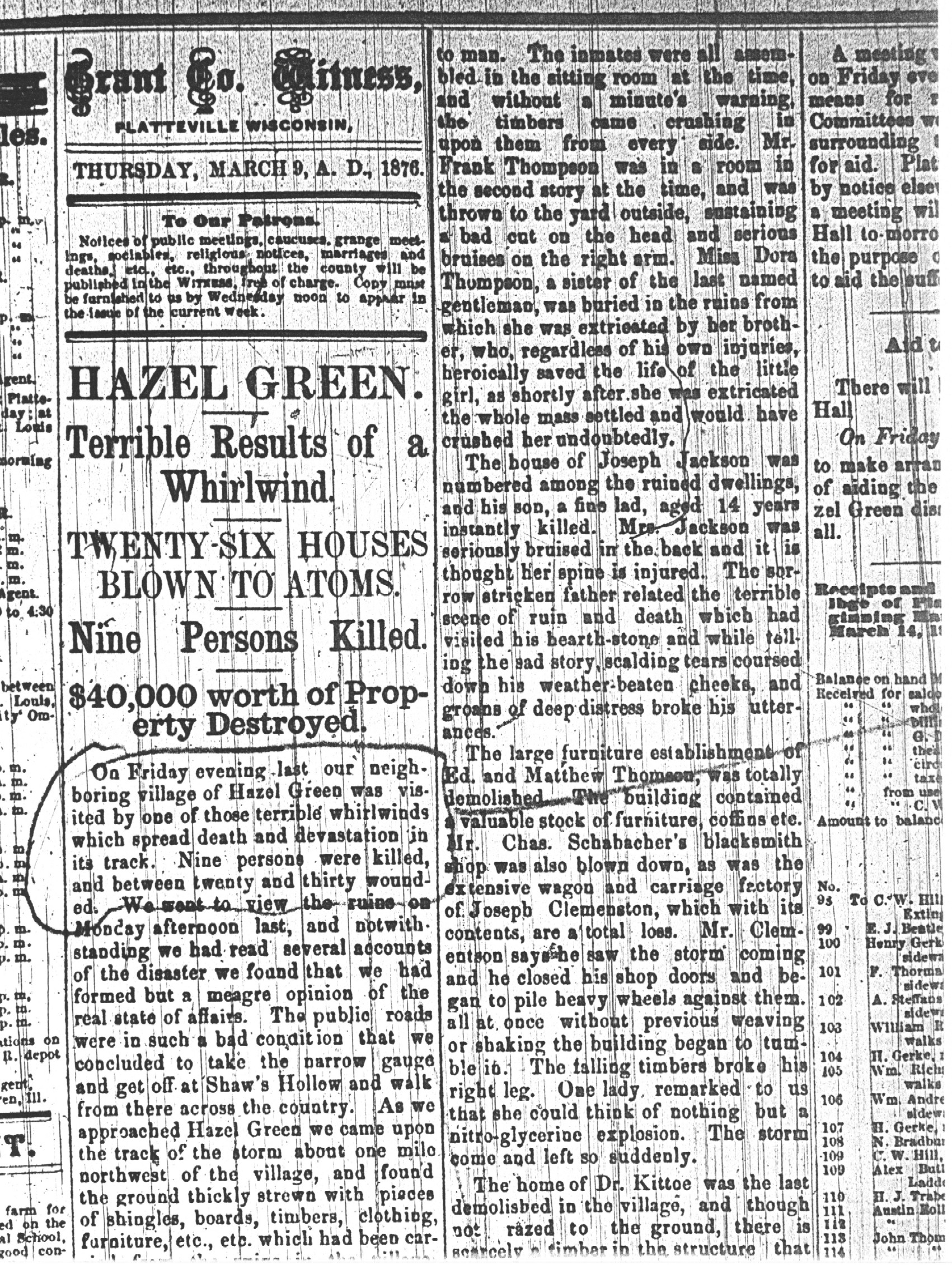March 10
March 10, 1876: The community of Hazel Green is destroyed by a cyclone.

Grant Co. Witness, March 9, 1876
(The date on the newspaper says March 9 but the tornado occurred on March 10. How could that be? Newspapers do make occasional mistakes and the Grant Co. Witness had the wrong date on its page.)
HAZEL GREEN.
Terrible Results of a Whirlwind.
TWENTY-SIX HOUSES BLOWN TO ATOMS.
Nine Persons Killed.
$40,000 worth of Property Destroyed.
On Friday evening last our neighboring village of Hazel Green was visited by one of those terrible whirlwinds which spread death and devastation in its track. Nine persons were killed, and between twenty and thirty wounded. We went to view the ruins on Monday afternoon last, and notwithstanding we had read several accounts of the disaster we found that we had formed but a meagre opinion of the real state of affairs. The public roads were in such a bad condition that we concluded to take the narrow gauge and get off at Shaw's Hollow and walk from there across the country. As we approached Hazel Green we came upon the track of the storm about one mile northwest of the village, and found the ground thickly strewn with pieces of shingles, boards, timbers, clothing, furniture, etc., etc. which had been carried from the ruins in the village. After supper and the next morning we took an extended view of the track over which the whirlwind had passed.
As many of our readers are aware, the village lies in the form of a parallelogram, four blocks wide from east to west and about three fourths of a mile long from north to south. The whirlwind swept the town near the south end, the storm coming from the southwest. It extended in width a little over two blocks and carried every building that stood in its track. Those who saw and heard it coming describe it as a huge, black, whirling cloud travelling with great speed, and making a noise which sounded like the rolling of a large number of railroad trains interspersed with the roaring and booming of cannon. From the centre of the cloud there was emited constant jets of light, which accompanied with lightning in other parts of the heavens made a scene which will long be remembered by those who witnessed it. In its track a half a mile southwest of the village was a stubble field which the previous rains had rendered soft and muddy. When the whirlwind passed over this it sucked up large quantities of mud and slush and this was deposited on the houses for a block or two on each side of the track, those who happened to be in or near the track of the tornado were covered with this mud almost beyond recognition.
Our stay was so short that we were not able to gather many of the particulars and we therefore avail ourselves of a well written account in the Galena Gazette.
Twenty-six houses were totally demolished - razed - and their contents borne upon the winds in every direction. Fields, yards, streets, and even in the cemetery, over which the storm passed but slightly are filled with the debris, and immense timbers, boards, scantling and posts were thrown heavenward, and driven deep into the ground in their descent. The first house in the village struck by the whirlwind was a wooden structure, one story high, owned by John Funk, the roof of which was partially carried away without damage to the inmates. Further on it lifted a small tenement in its mighty arms, completely razing the building, not a vestige of which, save the floor, is left. The family consisting of Mrs. Farrally and two daughters, took refuge in the cellar, and escaped injury......
|
